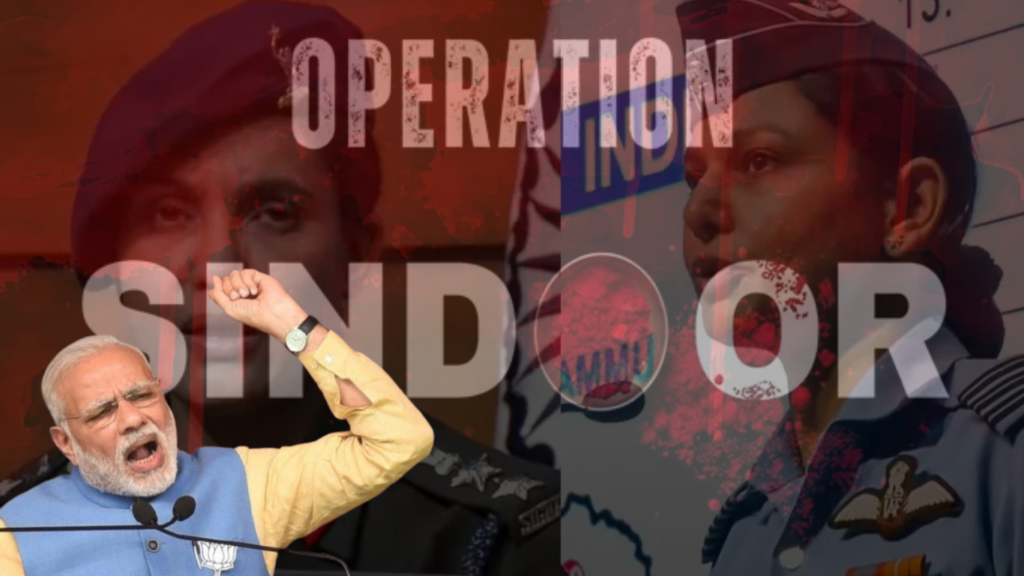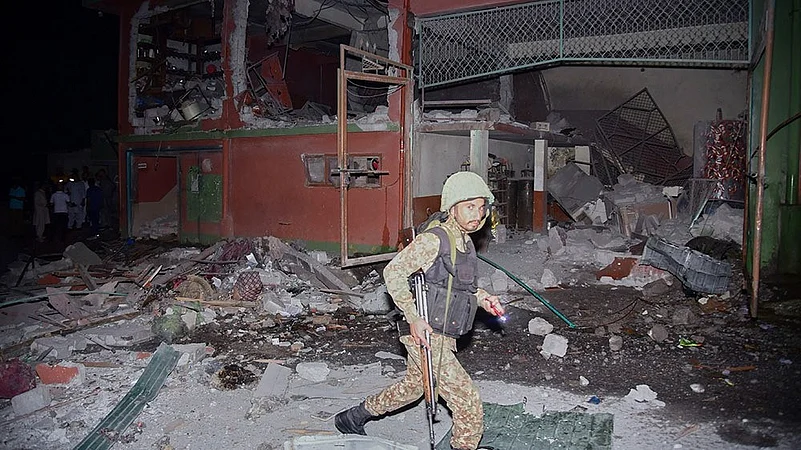
In a sudden escalation of tensions, India launched an operation of precise military precision called Operation Sindoor aimed at terrorist infrastructure along the Line of Control (LoC) and into Pakistan-administered Kashmir. The operation, initiated on May 7, 2025, is a major escalation of India-Pakistan tensions following a devastating terror attack in Pahalgam that left 26 civilians dead, including 25 Indian tourists.
This blog goes in-depth into the history, operations, reaction, and international implications of Operation Sindoor, offering an in-depth analysis of one of the most impactful military operations in the area in recent memory.
The Trigger: Pahalgam Terror Attack
Operation Sindoor was not an aggressive act. It was a stern military retaliation for the terrorist incident on April 22, 2025, at Pahalgam. Heavily armed militants opened fire on a tourist bus with a group of armed men and murdered 26 and injured several others. According to reports, the attackers belonged to Pakistan-based terror groups such as Lashkar-e-Taiba and Jaish-e-Mohammed, who have an age-old tradition of violence against Indian civilians as well as troops.
The attack outraged the country. Candlelight rallies took place in key cities, and calls for a firm response were heard in Parliament, on television news channels, and on social media. The Indian government assured that the perpetrators would be punished – and Operation Sindoor was that assurance made good.
What is Operation Sindoor?
Operation Sindoor is a three-service military operation, with coordinated attacks by the Indian Army, Air Force, and Navy. The title of the operation, “Sindoor,” refers to the red vermilion marking that represents sacrifice and bravery in Indian tradition — a poetic reference to the casualties during the Pahalgam attack.
The main mission was to dismantle terrorist launchpads and camps in Pakistan and Pakistan-administered Kashmir (PoK) that were reportedly being utilized for infiltrations and attacks on Indian territory.
Operation Execution
Based on defence sources, the operation consisted of 24 precision missile strikes conducted across nine major areas:
- Five places in Pakistan-administered Kashmir
- Four prominent hubs in Punjab province in Pakistan, including:
- Bahawalpur (sitting of Jaish-e-Mohammed)
- Muridke (Lashkar-e-Taiba’s camp)
- Shakar Garh
- Sialkot area
The attacks were conducted by utilizing a mix of:
- Long-range missiles
- Equipped drones
- Special forces ground units for tactical reconnaissance
Selection of the targets was made by months of collection of intelligence such as satellite and local asset inputs. Reports indicate that a minimum of 70-80 fighters were neutralized, and several weapon stores and communication hubs were destroyed.
Significantly, the Indian military insisted that no civilian or Pakistani military targets were hit, affirming the operation was against terrorism, not against the Pakistani state.
Pakistan’s Response
Pakistan acted quickly, asserting that five Indian warplanes were brought down in the operation — something the Indian military has refuted, reporting no losses of their own.
To retaliate, Pakistan opened up artillery fire along the LoC, particularly in the Rajouri and Poonch areas, killing seven Indian civilians and injuring more than 30.
India’s government condemned the action, saying it was a gross violation of sovereignty and reporting civilian casualties in areas targeted by missiles. Indian officials dismissed such allegations with satellite imagery and drone footage showing all the targets being associated with terror activity.
The International Response
The world has paid attention. While two nuclear-armed neighbors fought each other, the United Nations and some nations made statements calling for both sides to stand down:
- UN Secretary-General António Guterres was concerned, calling on both countries to behave responsibly.
- The United States issued a security warning to its citizens in Pakistan and warned against travel to areas of conflict.
- China condemned India’s move as “regrettable” and called for diplomatic talks.
- Russia proposed mediation, recalling its past policy of non-alignment in South Asian conflicts.
- The global community is in suspense, monitoring events carefully to prevent a full-scale regional crisis.
Public Reaction in India
Defense analysts and newsreaders have praised the Indian military for carrying out a complicated operation with restraint and precision. It is widely perceived as a change in India’s counter-terror strategy — from defense to pre-emptive and proactive strikes.
The victims’ families of the Pahalgam attack have felt a sense of justice, but there’s still grief.
Strategic Implication
Operation Sindoor is not merely a military action — it is a strategic message:
- To terror groups: Safe havens will not shield you.
- To Pakistan: Cross-border terrorism will be responded to with force.
- To the world: India will not stand idly by when its civilians are attacked.
This operation draws strength from the precedent established by the 2016 surgical strikes and the 2019 Balakot airstrikes, strengthening India’s new policy of zero tolerance towards terrorism.
Risks and the Road Ahead
Although the operation was a success from a tactical perspective, the situation is still extremely volatile. Some of the major concerns are:
- Risk of escalation to all-out war
- Border area civilians caught in the crossfire
- Risk of sleeper cells in India striking back
Security agencies have been put on high alert by the government, particularly in metro cities and sensitive areas such as Jammu and Kashmir.
Diplomatic efforts are also underway to contain the crisis. Backchannel negotiations, perhaps through impartial nations, should soon start in order to stop the deterioration of the situation further.
Conclusion
Operation Sindoor is a defining moment in India’s ongoing battle against terrorism. It showcases India’s military capabilities, strategic clarity, and political resolve. While the coming days may witness increased tension, the message from New Delhi is clear: terrorism will not be tolerated, and every drop of innocent blood will be avenged.
As the region navigates these turbulent times, the hope is for peace — but preparedness for defense remains paramount.
Tune in to Life Goals News for further updates on Operation Sindoor and the changing Indo-Pak scenario.




